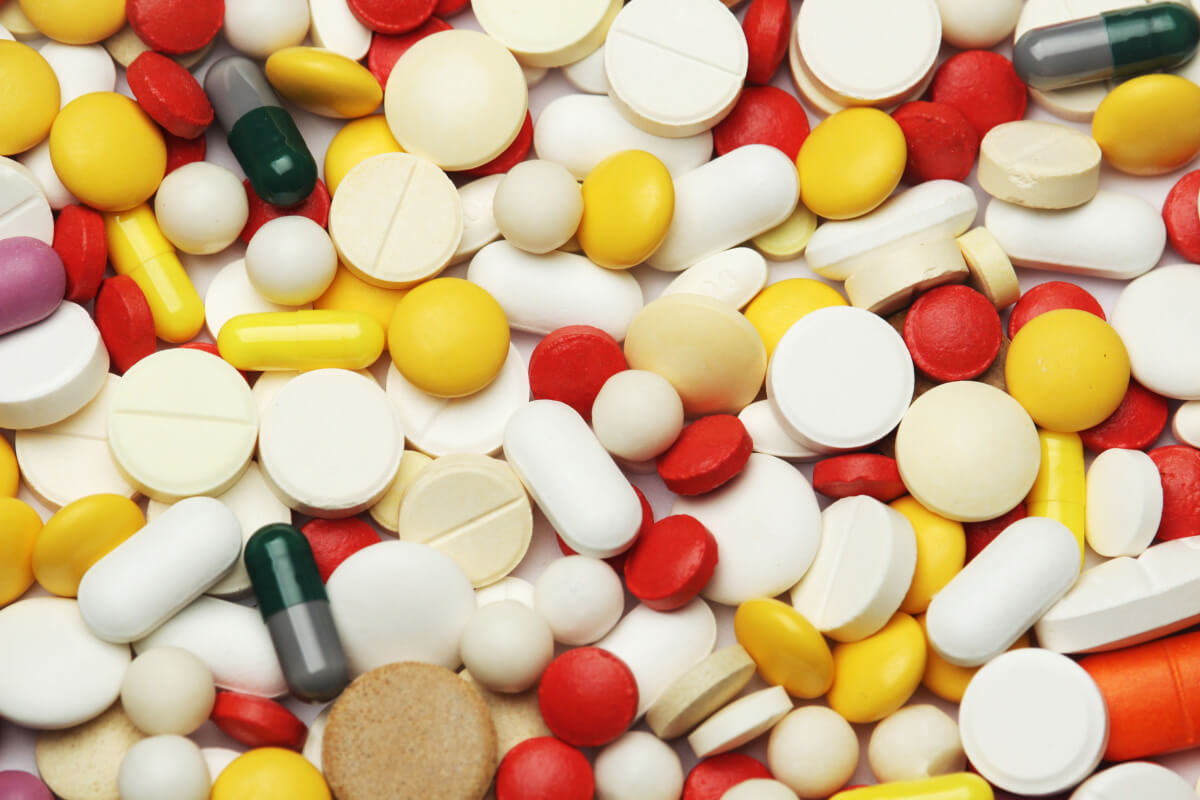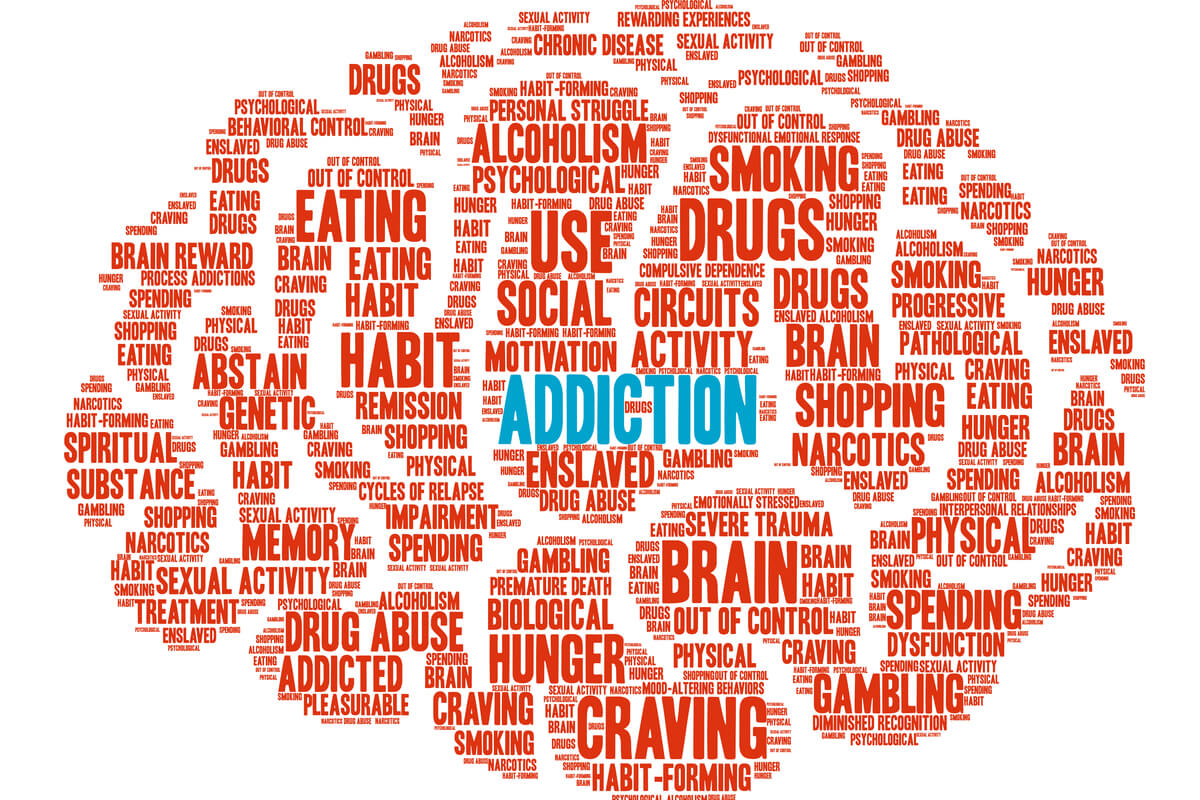
Drug classifications give you an idea of how a drug works (“mechanism of action”), its legal status, and its potential risks and benefits.
What Are Drug Classifications?
Drug classifications are ways of organizing medications into categories so patients and medical professionals can better understand how they work, their benefits and their side effect profiles. Drug classifications can give a person an idea of what they are about to experience before taking a drug.
These are common examples of drug classifications of substances with misuse potential:
- Alcohol/sedatives
- Barbiturates
- Benzodiazepines
- Cannabinoids
- Hallucinogens
- Opioids and opiates
- Stimulants
Some Common Drug Classifications
These are the groupings associated with drug classification by chemical makeup:
Alcohol/Sedatives
Alcohol is considered a sedative medication because it turns on GABA receptors in the brain and causes relaxation, sedation, and – at high levels – respiratory suppression and somnolence.
Excessive drinking has led to more than 140,000 deaths in the United States between 2015 and 2019.[1] Like all drugs that are habit forming, when used regularly or to excess, alcohol changes brain chemistry and leads to withdrawal when its use is suddenly stopped. Withdrawal from alcohol can be dangerous, and some people experience hallucinations and seizures when they attempt to quit drinking.
Barbiturates
Seconal and Nembutal are examples of barbiturates. Barbiturates also act as central nervous system depressants, causing symptoms similar to alcohol including sedation and respiratory depression. Medically they are used for anesthesia and for suppression of seizure activity. People who misuse these drugs report feeling similarly to how they feel when drunk. Continued misuse leads people to need bigger and bigger doses to experience the same degree of sedation, and people who continue to use can grow physically dependent on these drugs. The risk of severe poisoning rises with continued use.[2]
Benzodiazepines
Klonopin, Xanax, and Valium are all benzodiazepines. Benzodiazepines, similar to alcohol, turn on GABA receptors in the brain and can cause relaxation, euphoria, relief of anxiety, etc. At high doses they have effects similar to alcohol including respiratory depression and potential overdose.
Originally, these medications were designed to treat conditions once addressed by barbiturates, such as seizures, agitation, anxiety and insomnia. But benzodiazepines are also habit-forming. Especially if combined with other sedating drugs, benzos can cause overdose and death if consumed in excess quantities.
Most people use benzodiazepines to reduce anxiety and irritability. Some people use benzodiazepines to cope with the symptoms associated with an ongoing addiction to opioids or amphetamine drugs. The sedating impact of benzos can help prevent alcohol withdrawal seizures, and they are sometimes used for this purpose. [3]
Cannabinoids
Marijuana and its various products are included within the classification. These drugs are the most misused substances still considered illegal at the federal level.[4]
Most marijuana products come from a plant, but artificial versions exist. Anything with a chemical structure similar to marijuana is included in this class. [8]
Hallucinogens
Natural products like “mushrooms”, psilocybin and lab-created substances like ecstasy are included in this classification. These drugs alter reality and put the user into a dream-like state.
Anything with a structure similar to other hallucinogens is included within this class. [7]
Opioids & Opiates
Natural products (like opium) are opiates. Lab-made products (like Vicodin) are opioids. Today, both opiates and opioids are usually referred to as opioids. The substances in this class can manage pain and also cause euphoria when misused.
Opioids are generally considered safe when taken in small doses for a short time and as prescribed by a doctor.[5] But high doses can suppress the body’s core processes and lead to death. They are extremely habit-forming and carry a high risk of death by overdose.
Central Nervous System Depressants
Drugs in this category are commonly known as downers. They slow down activity within the brain and deliver a sleepy, calm effect. In high doses, these substances can also cause euphoria.[6]
Both barbiturate and benzodiazepine drugs are included in this class, as they both slow down brain activity. Newer prescription drugs, like sedative-hypnotic sleeping remedies, are also included here. And since alcohol can depress brain activity, it’s found here too.
Central Nervous System Stimulants
Drugs in this category are commonly called uppers. Prescription medications like Ritalin and illicit drugs like methamphetamine can speed up electrical synapses in the brain and fill people with energy. Anything with the ability to produce a burst of energy is included within this stimulant class.
Drug Classification by Legal Status
Most countries have a formal grouping system for drugs that help authorities determine whether a substance is legal or there are consequences for possession. Most of these systems classify a drug based on how dangerous a substance is, how much risk there is of developing a substance use disorder, and how helpful the drug might be for someone in need.
Classification systems like this can also help doctors. Some substances require special licenses for dispensation.[9]
The U.S. Drug Enforcement Administration assesses and groups drugs in America. There are five groups, and the lower the number, the more dangerous the substance.[10]
Schedule I
Dangerous drugs with no approved medical application are classified as schedule one drugs. Some schedule I drugs include Heroin, LSD, ecstasy, and cocaine.
Schedule II
Drugs in this class have a high risk of addiction and associated dangers but also come with some medical uses. Combination drugs like Vicodin, along with pure substances like fentanyl, Adderall, and Dexedrine are all examples of schedule II drugs.
Notice that there are both uppers and downers in this class. Again, this system isn’t made to help officials understand how these drugs are made or what they do. Instead, this grouping has to do with dangers and addiction potential relative to potential benefits.
Schedule III
Ketamine, anabolic steroids, and some codeine formulations are included in this group. Substances that can be dangerous at high doses but that also have accepted medical uses are all Schedule III drugs.
Schedule IV
Drugs in this group have a low risk of abuse and don’t tend to cause physical dependence, but they are not entirely free of risk. Substances like Ambien, and Xanax are included here, as are some alternative painkillers like tramadol.
Schedule V
Substances in this class have an even lower risk of misuse than Schedule IV drugs, but still contain limited quantities of habit-forming drugs like narcotics. Examples include codeine-containing cough syrups or anti-diarrheal medications such as Lomotil.
Why Drug Classifications Matter
There are several reasons why classifying drugs correctly matters.
Preventing Interactions
Combining drugs that work on the same system or bring about the same effect can lead to an overdose. Therefore taking drugs that are from within the same category can compound their effects and lead to overdose. For example, alcohol and benzodiazepines are both respiratory depressants, so they act synergistically and their combined use can increase the risk of overdose.
Assisting Law Enforcement
Illicitly using or buying drugs that are considered schedule I drugs may carry higher legal consequences than using higher schedule drugs. The schedule of a drug can be used by law enforcement to help dictate the duration and severity of legal consequences of drug diversion or misuse.
Helping You Heal
Some of the treatments for a substance use disorder involve medications. A common approach in Medication for Addiction Treatment (MAT) is to give someone a long-acting version of the drug to which you have developed a problem. For example someone with a heroin problem will be treated with methadone, a much longer-acting opioid. Knowing the drug classes helps doctors to guide treatment.
Allowing for Meaningful Conversations
Knowing how to classify a drug can help you anticipate what effects or side effects it might have, and what repercussions might occur with elicit or inappropriate use. If you have questions about any substance – prescribed or non prescribed – talk to your doctor about what class it falls into and what you should know about it before use.

Medically Reviewed By Elena Hill, MD, MPH
Elena Hill, MD; MPH received her MD and Masters of Public Health degrees at Tufts Medical School and completed her family medicine residency at Boston Medical Center. She is currently an attending physician at Bronxcare Health Systems in the Bronx, NY where ... Read More
- Alcohol Use and Your Health. Centers for Disease Control and Prevention. https://www.cdc.gov/alcohol/fact-sheets/alcohol-use.htm. April 2022. Accessed March 2023.
- Barbiturate Intoxication and Overdose. U.S. National Library of Medicine.https://medlineplus.gov/ency/article/000951.htm. July 2021. Accessed March 2023.
- Benzodiazepines. Alcohol and Drug Foundation.https://adf.org.au/drug-facts/benzodiazepines/. November 2021. Accessed March 2023.
- Marijuana and Public Health. Centers for Disease Control and Prevention.https://www.cdc.gov/marijuana/data-statistics.htm. June 2021. Accessed March 2023.
- Opioids. National Institute on Drug Abuse.https://nida.nih.gov/drug-topics/opioids. Accessed March 2023.
- Depressants. Department of Justice.https://www.dea.gov/sites/default/files/2020-06/Depressants-2020.pdf. April 2020. Accessed March 2023.
- Hallucinogens and Dissociative Drugs Research. National Institute on Drug Abuse.https://nida.nih.gov/publications/research-reports/hallucinogens-dissociative-drugs/how-widespread-is-hallucinogen-abuse. February 2015. Accessed March 2023.
- Cannabis (Marijuana) Research Report. National Institute on Drug Abuse.https://nida.nih.gov/publications/research-reports/marijuana/what-are-marijuana-effects. July 2020. Accessed March 2023.
- Drug Enforcement Administration Drug Scheduling. National Library of Medicine.https://www.ncbi.nlm.nih.gov/books/NBK557426/. August 2021. Accessed March 2023.
- Drug Scheduling. United States Drug Enforcement Administration. https://www.dea.gov/drug-information/drug-scheduling. Accessed March 2023.
- How Do Researchers Categorize Drugs, and How Do Drug Users Categorize Them? Contemporary Drug Problems. https://www.ncbi.nlm.nih.gov/pmc/articles/PMC3888963/. 2012. Accessed March 2023.
Download Our Free Program Guide
Learn about our program, its effectiveness and what to expect
Related articles
Imagine what’s possible on the other side of opioid use disorder.
Our science-backed approach boasts 95% of patients reporting no withdrawal symptoms at 7 days. We can help you achieve easier days and a happier future.









